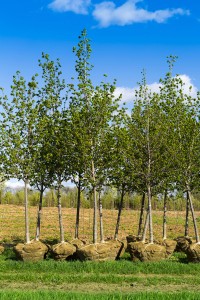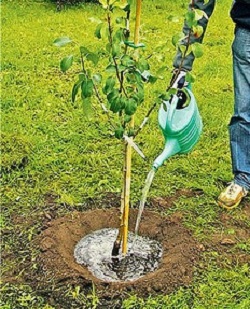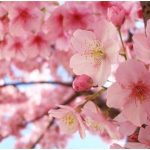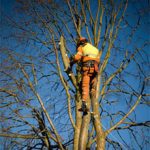How To Plant A Tree Like A Pro
A properly planted tree will live for many years, even centuries. Fail to use the right planting techniques, however, and your tree may never thrive. This kind of disappointment can be avoided as long as you choose the right species, select an appropriate location, and use proper planting methods. Healthy, mature trees can add thousands to the value of your property, so this is something you will want to do with care.
Choose A Suitable Species 
When you plant a tree it’s very important to choose a species that is ideal for your area’s hardiness zone. The U.S. is broken up into 12 zones based on climate. These zones categorize the areas where specific tree species are capable of living. The Portland metro area is in zone 8a and 8b, meaning any tree you plant should be capable of surviving temperatures as low as 10-20 degrees Fahrenheit.
If you are planting a street tree within the City of Portland, you are required to have a permit and choose a tree from a list of approved species. Curious about whether you need a permit? Read our earlier blog post.
Location, Location, Location
The planting site is very important to the future of your tree. Before you start digging a hole, analyze your proposed location. It should have adequate sunlight, drainage, and enough space to accommodate the tree once it’s reached maturity. The area should also be free of power lines and other obstructions.
One more thing to consider when you select your planting site is the surrounding landscape trees in your design. If your location has existing plantings, make sure they have the same water needs as your new tree. For example, if your new tree is drought tolerant, it’s best not to plant it next to water-dependent plants.
Digging the Hole
Most landscape trees come in a container or wrap just big enough to fit the root ball. The hole you dig needs to easily accommodate the size of the root ball, and ideally be twice as wide. When in doubt, make the hole wider rather than shaving the root ball to fit your hole.
While your tree is still in its container, take note of the soil surface relative to the base of the tree trunk. Dig your hole deep enough so that this surface is completely level with the ground surrounding the hole. The root ball should not stick out above or sit below this elevation when you place it in the hole.
Backfill
Use the soil you excavated from the hole to backfill around the tree. If your soil isn’t ideal you can mix in some compost to lighten the soil, which will help the tree root out more quickly. Replace the dirt around the root ball layer by layer, a few inches at a time. Pack down each layer with a shovel or your boot to eliminate air pockets.
Make a Well 
To make sure there’s plenty of water delivered to the roots and soil, create a well around the base of your tree. At the edge of the hole where the ground is undisturbed, build a berm around six inches tall and wide. Pack it tightly with your hands so there are no loose spots where water can break through when you irrigate the tree.
Just Add Water, Lots of Water
Watering your tree after planting is critical to its survival. Use a hose to fill the well you made with water. After the water is absorbed, fill the well again for good measure. If it gets particularly hot or windy after planting, repeat this step daily or every other day so the roots get plenty of moisture. Thorough saturation ensures that any air pockets in the soil collapse before they cause root hairs to die.
When Should You Plant Your Trees?
Winter and early spring are ideal times for planting. A young tree needs time to get established before summer’s heat. Mother Nature can help baby the new transplant if you plant during the cool, rainy part of the year.
Where Should You Plant Your Trees?
Before you head to the nursery to choose a tree, take stock of the conditions in your yard. Once you find the perfect location, choose a tree that’s suited to that environment. Here are some things to think about before you purchase a tree:
Available room: You’ll need a site that has room for the mature tree’s branches, crown and roots. Choose a spot that won’t crowd the new tree, the established landscaping or buildings and structures. If you have a sick tree, you may want to have it removed so you can replant on the same spot. Inexpensive Tree Care can remove your tree and grind the stump. The soil will be soft and ready for planting immediately.
Utilities wires: Plant trees at least 25 feet away from overhead wires. Tree branches that interfere with power lines cause outages and are potentially dangerous. If a tree threatens lines, it will need constant pruning and may even need to be removed. Trees that grow to 30 feet or smaller are best for areas with overhead power lines.
Soil and sun: What’s the soil like in your yard? Trees like dirt that drains well and hasn’t been compacted by construction. Soil that has a lot of clay or sand may need to be improved before planting. Speaking of moisture, make sure the site you choose is within reach of your hose or irrigation system. New trees need quite a bit of watering.
Benefits: Are you seeking more shade? Do you a need wind break? Consider the benefits you hope to gain from your tree. A tree on the south side of your home may help block sun. An evergreen tree placed in the sightline of your neighbor’s house can create more privacy.
Choose Your Tree
Local nurseries stock trees that do well in Oregon and Washington. Once you’ve chosen the planting site, you’re ready to shop. Don’t hesitate to ask the nursery for recommendations. A nursery can recommend trees that are best for creating shade or privacy and can help you steer clear of trees that may be too large for your space.
For more information about choosing a tree, check out “Selecting, Planting, and Caring for a New Tree” published by Oregon State University. It’s available as a free downloadable pdf or as an app for your tablet.
Inexpensive Tree Care can help keep your trees happy and healthy throughout their lives. Call us for questions about trimming, pruning or tree removal.




